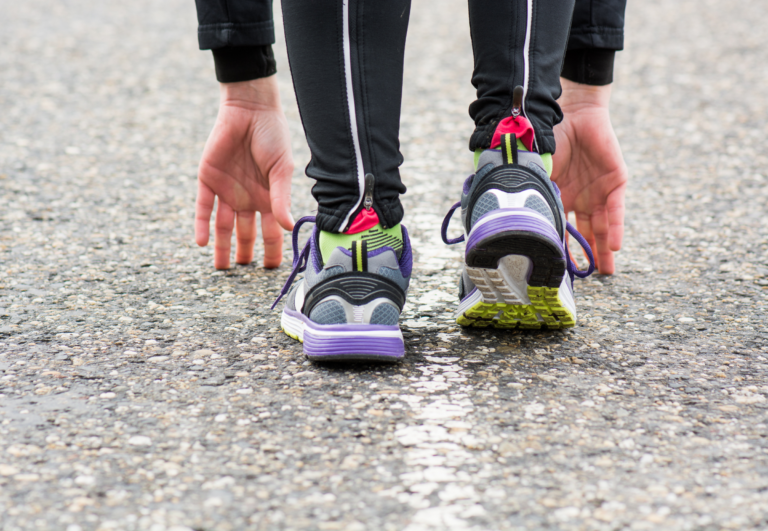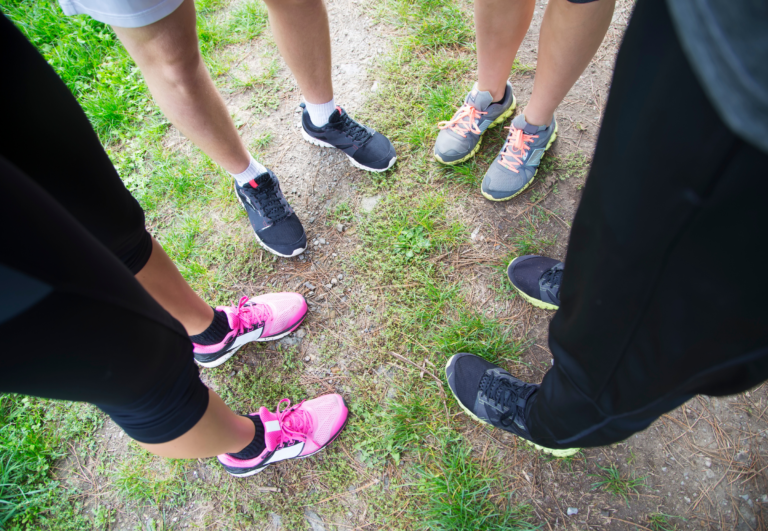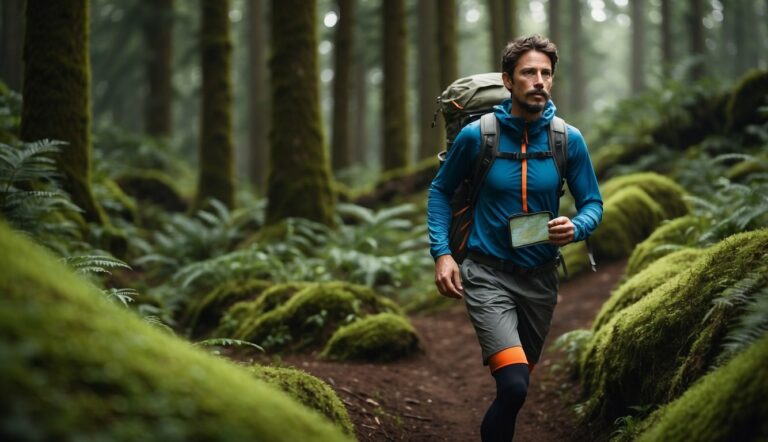How to Deal with Rocks and Roots in Trail Running Shoes: Essential Techniques for Rough Terrain
Navigating a trail’s unpredictable terrain requires skill and the right equipment. Rocks and roots are common obstacles that pose a challenge to trail runners. I advocate that a good pair of trail running shoes can make all the difference. They’re designed to provide protection, durability, and stability. When I tackle rocky paths, I look for footwear with a rock plate – a firm insert between the midsole and outsole that guards against sharp objects.
Trail conditions vary widely, so it’s essential to assess the specific demands of your chosen route. For instance, when I run on trails with loose rocks, I prefer shoes with deep lugs that enhance grip, improving my stability and confidence over challenging sections. Moreover, a durable upper material is crucial as it prevents tearing from run-ins with abrasive surfaces. In my experience, features like gaiters can also be beneficial to keep debris from infiltrating your shoes, allowing you to focus on the run without any discomfort or distractions.
How To Handle Rocks and Roots When Trail Running
Trail running across varied terrains demands agility, foresight, and an understanding of the ground beneath your feet. As a UESCA certified running coach with extensive experience on the trails, I’ll share targeted strategies to navigate these unpredictable landscapes safely and effectively.
Technical Trails and Steep Descents
On technical trails, overlooking the importance of proper form and deliberate foot placement can lead to missteps, especially on steep descents. A slightly wider-than-normal stance assists in balance, and shortening your stride helps maintain control.
When descending, lean slightly forward, allowing your center of gravity to guide you down the slope, and use your arms for balance.
- Stance: Wider for stability
- Stride: Shorter for control
- Posture: Lean forward on descents
- Arms: Use for balance
Handling Rocks and Roots
Traversing paths cluttered with rocks and roots calls for heightened awareness and a keen eye. Anticipate your steps by looking ahead and identifying your line. Key is to keep your gait quick and light, minimizing ground contact time to avoid tripping over obstacles. For rocks that can’t be avoided, ensure to land softly and roll your foot from heel to toe.
- Awareness: Plan steps in advance
- Gait: Quick and light
- Footwork: Soft landing and rolling motion
Transitioning from Mellow to Rocky Terrain
Moving from smooth, mellow terrain to a rocky trail can be jarring if unprepared. Start by reducing speed to adjust your body’s rhythm to the new demands. Proactively engage your core for stability and be ready to make micro-adjustments with your feet. Practice this transition can make it feel more seamless over time.
- Speed: Reduce to adjust
- Core: Engage for stability
- Feet: Micro-adjustments for balance
The shift from a flat, forgiving path to one filled with boulders and irregular surfaces is a crucial skill in a trail runner’s repertoire. By adhering to these focused techniques, you can confidently master any terrain the trail presents.
Enhancing Performance and Safety

When navigating trails rife with rocks and roots, optimizing your footwork and choosing the right gear enhances both performance and safety. Let’s break down the specifics.
Footwork and Gait Adjustments
Proper footwork is crucial. I recommend shortening your stride to maintain agility, allowing for quick reactions to obstacles. This also provides the option to extend a stride when necessary to avoid hazards. It’s essential to focus on a midfoot strike for stability and to prevent stumbling over uneven terrain.
Importance of Socks and Lacing Systems
Socks play a key role in protecting the feet. They should provide ample cushioning and fit snugly without wrinkles, reducing the chance of blisters. A proper lacing system ensures a secure fit, helps distribute pressure evenly, and can adjust to swelling feet, which is particularly important for safety during long runs.
Preventive Measures for Injuries and Blisters
To minimize the risk of injuries, incorporating strength training for the core and lower body is vital. This enhances balance and stability on unpredictable surfaces. Additionally, selecting trail running shoes with a protective toe bumper and underfoot cushioning guards against impacts with roots and rocks, reducing the risk of blisters and bruises.
Practical Insights for Optimal Shoe Usage

Choosing the right trail running shoes and caring for them properly can significantly improve your experience on trails littered with rocks and roots. In this section, I’ll give you focused insights on timing your shoe replacement, maintaining your footwear, and selecting the best shoes for various weather conditions.
When to Replace Trail Running Shoes
Understanding Indicators of Wear:
- Check the tread regularly. Diminished tread can lead to less grip on uneven terrain.
- Inspect the midsole. If it shows heavy creasing or feels less responsive, it’s time for a replacement.
- Examine the upper material. Once it becomes overly stretched or torn, it loses its ability to protect and support.
Durability Lifespan:
Typically, a trail running shoe’s life ranges from 300 to 500 miles. However, a shoe’s lifespan can be shorter if frequently exposed to severe trail conditions. As part of my professional practice, I advise keeping a mileage log for your shoes to gauge their wear accurately.
Maintaining and Cleaning Your Shoes
- Remove debris after each run to avoid material degradation.
- Wash shoes with mild soap and water, avoiding harsh detergents that can break down materials like Gore-Tex.
Storage:
- Dry shoes in a well-ventilated area.
- Avoid direct heat as it can warp the structure of a lightweight shoe.
Shoe Selection for Weather Conditions
Traction and Protection:
Choose shoes with lugged soles for improved traction on loose or slippery surfaces, especially in wet conditions. A rock plate can offer additional protection from sharp objects.
Weatherproof Features:
- Waterproof shoes are beneficial in wet climates. Look for features like Gore-Tex liners for optimal defense against moisture without sacrificing breathability.
- In hot and dry climates, opt for durable yet lightweight and breathable materials to keep feet cool.
In my experience, paying attention to these specifics will not only enhance your trail running adventures but also ensure the longevity of your footwear.
Choosing the Right Trail Running Shoes
Choosing the proper trail running shoes is crucial for navigating rough terrain. Key points in selection involve understanding the differences with road shoes, features that provide traction and protection, and ensuring the right fit for optimal comfort.
Trail Shoes Versus Road Shoes
Trail running shoes and road running shoes differ significantly in design to meet the demands of varying terrains. Trail shoes are built with aggressive outsoles for grip and are more durable to withstand the rigors of off-road paths, while road shoes are typically more lightweight and designed with less pronounced lugs on the sole.

Key Features for Traction and Protection
For trails littered with rocks and roots, the outsole of your trail shoes must have deep lugs and a sticky rubber compound for enhanced grip. Good trail shoes also feature a protective upper and a durable toe cap to protect against debris and a tough sole to provide underfoot protection.
| Key Feature | Benefit |
|---|---|
| Deep lugs | Better traction on uneven surfaces |
| Sticky grip | Secure footing in both dry and wet conditions |
| Toe cap | Protection against rocks and roots |
| Durable sole | Shields the foot from sharp objects |
Finding the Perfect Fit and Comfort
When selecting trail running shoes, the fit should be snug to avoid slipping inside the shoe, but with enough room to allow for foot swelling on long runs. Look for cushioning that suits your preference for ground feel versus protection, and ensure there’s ample support for your ankles.
- Snug fit: Avoid excessive movement to prevent blisters.
- Cushion level: Balance between ground feedback and long-run comfort.
- Breathability: Seek an upper that offers ventilation to keep feet dry.
Remember, while cushioning is important, too much can reduce trail feel, which is critical for quick technical adjustments.
Recommendations for Trail Shoes that can Handle Rocks and Roots
Trail runners face a unique set of challenges on the trails, such as navigating over rocks and roots. The latest advances in shoe technology have focused on dealing with these obstacles, providing runners with a range of options that offer protection, grip, and energy return.
Analyzing Shoe Technologies: Plates, Cushioning, and Lugs
Rock Plates: These are inserted between the midsole and outsole to protect the foot from sharp objects. A good rock plate is stiff enough to shield against rocks yet flexible enough not to impede the natural foot movement.
Cushioning: Essential for absorbing impact in the heel and forefoot, cushioning comes in various densities, providing a balance between comfort and trail feel. Shoes with a higher stack height tend to offer more cushioning but can reduce stability.
Outsole and Lugs: The outsole is designed for excellent traction. Lugs—the protrusions on the outsole—vary in shape and size, with deeper and more aggressive patterns offering improved grip on loose or muddy terrains.
| Shoe Model | Rock Plate | Cushioning | Lug Depth | Price Range |
|---|---|---|---|---|
| Hoka Mafate Speed 4 | Yes | High | Deep | $$$ |
| Altra Lone Peak 7 | No | Moderate | Average | $$ |
| Salomon Pulsar Trail | Yes | Responsive | Moderate | $$$ |
| Saucony Peregrine 13 | Yes | Dense | Aggressive | $$ |
| La Sportiva Bushido II | Yes | Low | Deep | $$$ |
| Brooks Caldera 6 | No | High | Moderate | $$ |
Top Trail Running Shoes Reviewed
I’ve tested various models to provide you with insights into some of the best trail running shoes available:
- Hoka Mafate Speed 4: Known for their cushioning, these shoes are protective yet still offer a good trail feel. Their rock plate and heel design make for safe descents.
- Altra Lone Peak 7: With a balanced cushioning and an emphasis on flexibility, these shoes are a solid choice for runners who prioritize a natural foot position, thanks to their zero-drop design.
- Salomon Pulsar Trail: A lightweight option with a responsive midsole providing excellent energy return, coupled with an aggressive lug pattern for grip.
- Saucony Peregrine 13: Offers a protective sole with dense cushioning, and its lugged outsole is highly regarded for its traction capabilities, especially on rugged trails.
- La Sportiva Bushido II: This model is engineered with a focus on stability, featuring an aggressive lug pattern for excellent traction and a stiff rock plate for enhanced protection.
- Brooks Caldera 6: Designed for a plush ride, the Caldera 6 has dense cushioning and a flexible sole that encourages a more natural stride. It’s known for comfort but less so for aggressive traction.
These shoes have been through rigorous testing to ensure they meet various trail conditions. When selecting a pair, consider the type of trails you run on, your preference for cushioning versus trail feel, and the importance of a protective toe guard for dealing with trail debris.






